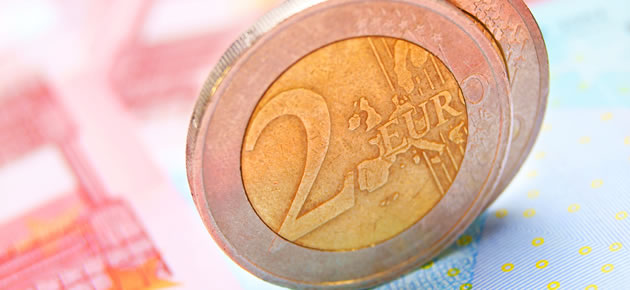The Euro to Australian Dollar exchange rate (EUR/AUD) tumbled by around -1.2 cents from 1.5380 to 1.5260 earlier this morning as markets reacted to the latest set of Eurozone PMI numbers.
The latest private sector output data to emanate from the currency bloc printed confusingly as German Services hit a 3-month high of 55.4, but Manufacturing fell to a 2-month low of 54.7. As the currency zone’s largest economy, Germany has a huge influence over the Eurozone’s total performance and this was reflected in a 2-month low Composite Eurozone PMI result of 52.7.
Perhaps the most worrying figure was the one-point slowdown in Eurozone Manufacturing from 54.0 to 53.0. Chris Williamson of Markit Economics, who compiled the report, described the soft scores as a reminder that “the region’s recovery continues to be uneven and fragile”.
The single currency was also hampered by an unexpected -0.1% decline in the German Producer Price Index. The PPI inflation barometer had been expected to print positively at 0.3%, and as such the -0.1% decline was seen as a bearish signal, perhaps indicative that price pressures in the 18-nation bloc are beginning to recede again.
Deflation is one of the European Central Bank’s most prominent fears at the moment and any sign that inflation is falling towards dangerously low levels could persuade the Bank to introduce another rate cut, which would prove damaging to the Euro exchange rate.
The Euro had initially rallied by over a cent against the ‘Aussie’ Dollar during the early hours of the morning in reaction to a disappointing Chinese Manufacturing report. HSBC’s index showed that factory output decelerated from 49.5 to 48.3 during February, confounding expectations for another milder contraction of 49.5.
The 7-month low Manufacturing print in the world’s second largest economy dampened demand for the Australian Dollar because it was seen to reduce investors’ appetite for risk. It was also taken as a bearish indicator because China is the largest importer of Australian goods.
However, the 2-week high that EUR/AUD reached in reaction to the soft Chinese PMI result collapsed during the London session as Eurozone private sector data also printed underwhelmingly.



